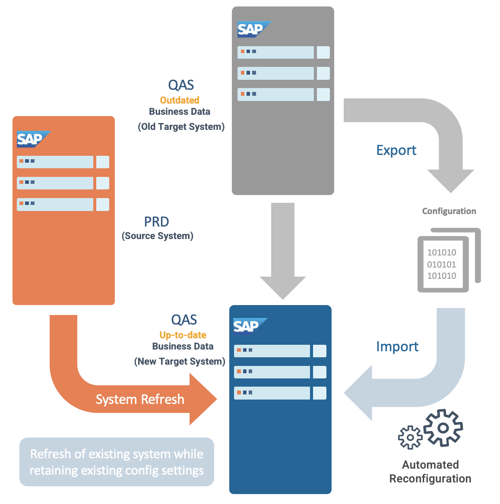
In 2021, Under Armour (“UA”), a well-recognized leading athletic performance apparel company, embarked on a cloud journey to migrate SAP to AWS.
Following UA’s selection of AWS as the cloud platform to host its large SAP environment, the migration project would modernize SAP operations to allow speed and resiliency of cloud-based automation in delivering business values to supply chain, retail, global trade services, R&D, ERP, and integration with its partners.
Complete the entire SAP migration in six months with minimal impact on the business.
Deploy and operate the SAP environment with automation and leverage a well-architected framework to ensure best practices for high availability, performance, and manual-process reduction.
UA engaged AWS Professional Services, which partnered with IT-Conductor SAP migration experts and the IT-Conductor platform to automate certain parts of the AWS migration and SAP IT operations. The primary SAP applications included S/4HANA, ECC, SCM, MDG, GTS, PO, and BI/BOBJ, all based on HANA and SAP ASE databases.
After conducting Automated SAP Landscape Discovery, IT-Conductor worked with AWS Professional Services to leverage the CloudFormation templates to customize and build SAP HANA and ASE systems on AWS.
The HANA replication was automated to migrate the data from source to target systems on AWS.
The system refresh processes were automated with IT-Conductor SID-Refresh for Post-Copy Automation for 5 SAP landscapes.
Cloud Formation Templates (CFT): Quick Start deployment of components and software provisioning
SAP Certified EC2 Instance Series M5, C5, R5, X1, X1E, U1:
For HANA (R5, X1, X1E, and U1) and
For SAP Application servers such as ASCS, ERS, PAS, and AAS (M5, C5).
Storage: Amazon EBS certified for SAP workloads - General Purpose SSD (gp2) and Provisioned IOPS SSD (io1) storage solutions for SAP HANA workloads
Network storage: Amazon EFS (Elastic File System) - EFS is a backbone for deploying SAP High-Availability Systems on AWS.
Amazon S3: S3 is used for storing SAP Software, HANA Backup database, logs, and scripts.
Figure 1: SAP High Availability Architecture on AWS
As part of Under Armour’s SAP migration to AWS, automation was identified as a top priority to ensure we leverage best practices in standardized deployment and use industry-leading tools to automate SAP IT Operation processes. IT-Conductor fits nicely into the solution mix being an AWS SaaS Marketplace platform and a deep automation specialist.
With the combination of SAP expertise, superior cloud and automation platform, as well as automation templates, the project delivery was completed within 6 months and transitioned into SAP IT Operations with application performance management (APM) and Workflow Automation.
Soon after the migrations, the need to sustain N+1 project systems required SAP system refreshes which were automated using IT-Conductor SID-Refresh to optimize the process and speed up parallel refresh efforts.
 Figure 2: IT-Conductor Systems Refresh Automation via SID-Refresh
Figure 2: IT-Conductor Systems Refresh Automation via SID-Refresh
It is through IT-Conductor’s investment in partnership with AWS since 2015, and our commitment to automating complex digital transformation challenges for customers like Under Armour, that we are proud to deliver enhanced platform services for migrations and life-cycle management on the cloud.
Under Armour achieved high resiliency through efficient automation and cloud infrastructures for SAP on AWS as the business operational backbone for mission-critical applications.
The migration was achieved with minimal impact on the business while delivering better application performance.
The automation reduced 80% of manual deployment, increased standardized infrastructure as code, and delivered faster services to the business digital transformation requirements.

E-mail us at info@itconductor.com
Phone Support
Worldwide: +1 (408) 416-2565
North America Toll-free: +1 (888) 553-5256
Monday to Friday 8:00 am to 7:00 pm US Pacific Time
Copyright © 2025. IT-Conductor. All Rights Reserved | Privacy Policy | Terms of Use | Copyright and Trademark | Cookie Policy